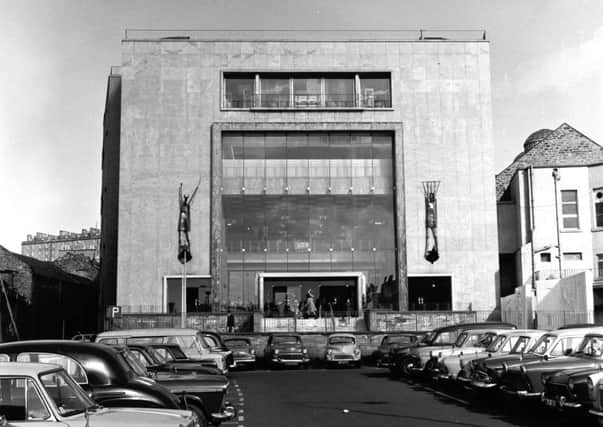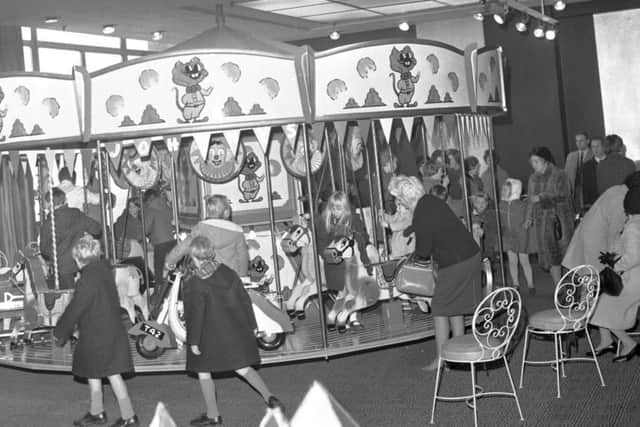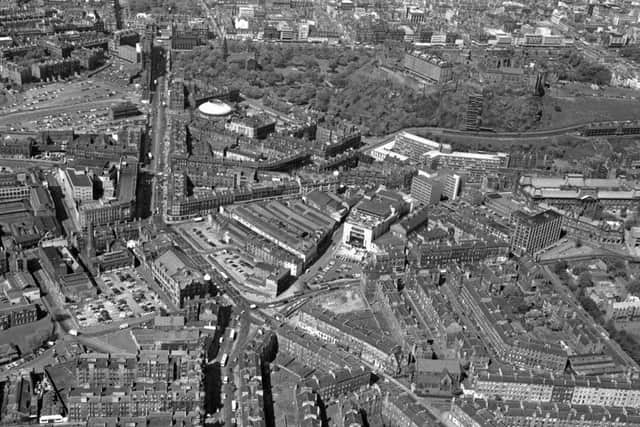Remembering Edinburgh's Goldbergs department store


In the capital, there really was nowhere quite like Goldbergs.
Abraham Goldberg, a Jewish immigrant hailing from Eastern Europe, opened the first store in Glasgow in 1908, kicking off a business empire that would go on to boast more than 100 outlets the length and breadth of Scotland.
Advertisement
Hide AdAdvertisement
Hide AdThe purpose-built Edinburgh store was completed in the summer of 1960, standing prominently in the heart of Tollcross opposite the district’s famous clock.


It was quite unlike anything else which had gone before.
The Edinburgh Goldbergs’ lofty, plinth-like frontage, dressed in distinctive pale yellow stone with huge glass windows, was a world apart from the stuffy Victorian-Edwardian department stores of yesteryear.
It must have seemed as if a spaceship had landed among the soot-ridden tenements of Tollcross.
Inside, Goldbergs was an airy palace of automatic doors, escalators and Mediterranean whitewashed walls.


Customers marvelled at its fancy decors and tremendous window displays, and a funfair, a creche, and an aviary filled with exotic birds kept the kids well-entertained.
To cap it all off, the Goldbergs roof garden boasted some of the finest views of Edinburgh Castle to be had from anywhere in the city.
Goldbergs was initially closed on a Saturday and open on a Sunday so that the owner could observe the Jewish Sabbath. The rather curious opening days eventually changed after Abraham Goldberg’s passing.
Advertisement
Hide AdAdvertisement
Hide AdIt is worth noting that the owners’ religious leanings did not prevent Goldbergs from putting on a dazzling display for Christmas. December is when the store came alive.


Later on, the store developed its own unique loyalty scheme and even had its own fashion brand, Wrygges, both of which proved to be extremely popular.
The catalyst for the Edinburgh store and expansion into a Scotland-wide chain was the handing-over of the business from father to sons, Ephraim and Michael.
Despite a strong economic performance in its first two decades, the opening of both the St. James and Waverley Shopping Centres, in 1973 and 1985 respectively, hit the Edinburgh Goldbergs hard.
The department store had been intended as the showpiece in a new busy interchange at Tollcross, but the new roads never passed the drawing board and the store failed to attract the kind of footfall it had been built for.


Goldbergs ceased trading in 1990 with demolition of the store taking place six years later. Apartments have since been built on the site.
Since its closure, the much-lamented shoppers’ paradise secured an almost mythical presence within the collective memory of just about every Edinburgh resident over the age of 30. There can be few structures dating from the 60s which are recalled so fondly.